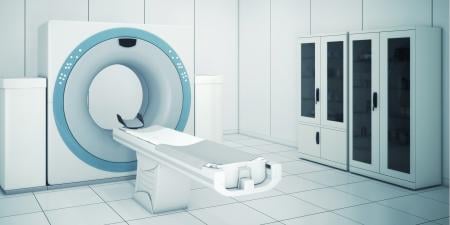Case
Mrs. Lee is a busy, working mother. She has raised three children, all of whom are successful attorneys, and was looking forward to retirement when she was diagnosed with breast cancer in her left breast. Her tests following surgery showed no cancer, and six months later Mrs. Lee went to a breast imaging center for a follow-up visit.
Dr. Harris reviewed old imaging studies in preparation for her meeting with Mrs. Lee. She looked at the mammogram that had been interpreted as normal by another radiologist, 18 months before Mrs. Lee was diagnosed with breast cancer. After careful examination, Dr. Harris noted a small, ill-defined density in the left breast. It was in the location where the cancer was diagnosed on the subsequent mammogram and, in retrospect, it most likely represented the cancer in an earlier stage. In her own mind, Dr. Harris believed that many radiologists, possibly even she herself, would have interpreted the mammogram as normal. She wondered whether to tell Mrs. Lee what she had seen.
Commentary
There has been increasing interest in disclosing unanticipated outcomes—especially those resulting from medical errors—to patients [1]. Most states have passed or are considering laws that grant some degree of legal immunity to physicians who inform patients about errors and apologize for them. The National Quality Forum recently added disclosure of unanticipated outcomes to its list of safe practices [2]. Many hospitals and health care organizations have adopted institutional policies that encourage disclosure, and some health care institutions and malpractice insurers that have adopted open disclosure policies have reported improvements in their litigation experience [3].
Yet a significant gap persists between these recommendations and current practice. Some studies suggest that as few as one-third of harmful errors are discussed with patients [4]. While physicians generally endorse the concept of disclosure, they are unsure what words to choose, hesitate to explicitly state that an error has occurred, seldom discuss how recurrences will be prevented, and worry that an apology may represent an admission of liability [5-8]. Barriers that contribute to this disparity between recommendations and practice include physicians' fear of malpractice, embarrassment over making harmful errors, and low confidence in their skills to communicate with patients about a mistake.
Error Disclosure in Mammography
This case highlights additional reasons why disclosure can be so difficult. Oncology presents an especially challenging set of issues due to the vulnerability of the cancer patient, the uncertainty and fear associated with cancer diagnoses, and the toxicity of the treatments [9]. Disclosures in cases of mammography error are even more complex. Failure to diagnose breast cancer is one of the most common and costly causes of malpractice litigation, and radiologists are the most frequently named defendants [10,11]. In one recent survey, 35 percent of radiologists who interpret mammograms said they have considered leaving this area of image interpretation due to malpractice concerns [12].
This case is also challenging because it represents a potential error on the part of the radiologist who interpreted a previous film—not the doctor who is currently treating the patient. While standards are being developed to help doctors disclose their own errors, similar guidelines for discussing other doctors' errors with patients are lacking.
In the absence of formal guidance, Dr. Harris should consider a number of questions.
Was this an error? Physicians often underestimate the difficulty of determining whether an error occurred, and, if so, whether it harmed the patient. The assistance of patient safety analysts or expert physicians in the same specialty is often required to provide an unbiased answer to this important question. This case represents an example of a false-negative mammogram, that is, one read as normal in a patient who was subsequently diagnosed with breast cancer within a relatively short time. Determining whether a false-negative represents an actual error is difficult. In one retrospective look at the prior mammograms of patients diagnosed with breast cancer, about one-third of the films had no visible precursor lesions, one-third had precursor lesions that were visible but not worrisome in appearance, and one-third had malignant-appearing precursor lesions that were missed [13].
In the case at hand, Dr. Harris is unsure whether she would have interpreted the prior mammogram as normal. She might consider submitting the film to a legally protected peer review forum to determine whether the prior reading was an error. Finding a forum might be difficult if the initial interpretation was made by a physician at another institution (i.e., not a "peer" as defined by quality assurance protection statutes), or if Dr. Harris practices in a state, such as Kentucky, where the legal protection afforded to peer review forums has been reduced.
Did the error harm the patient? If Dr. Harris feels confident that the interpretation of the prior film represents an error, she should then consider whether it harmed Mrs. Lee. This is an especially tough question to answer in the case of false-negative mammograms and is independent of whether an error in diagnosis was made. More advanced cancers often require more complex and toxic treatments with lower chances for success than early-stage cancers. Cancer is treated at the stage in which it is diagnosed, however, and determining whether a given delay in diagnosis harmed the patient can be tricky. Even the definition of "harm" is fraught with ambiguity. For example, would the mere knowledge that her cancer diagnosis might have been delayed constitute a psychological harm to the patient whether or not the delay caused physiologic harm?
Will the physician who read the earlier film tell the patient what happened?If it is clear that a harmful error has occurred, it is desirable for the physician most closely associated with the event to tell the patient about it. Dr. Harris might contact the original radiologist with her concern and inquire whether he or she would be willing to discuss the event with her or with the patient directly. The original radiologist, however, may interpret such a call as an unwelcome contact from a competitor. Perhaps in the future, a neutral third party, such as a county medical society, could facilitate conversations between physicians about potential errors such as questionable film interpretations. Providing appropriate venues for physicians to discuss quality-of-care concerns with one another presents a formidable challenge to the medical system and is the subject of considerable research and dialogue [14].
What are the goals of disclosure? In the event that (1) the prior reading was an error, that (2) caused the patient harm, and (3) the involved radiologist refuses to tell the patient of the harmful error directly, Dr. Harris should consider what her goals are for informing the patient of the mistake. There are two primary ethical rationales for disclosure, and, at times, they can point physicians in different directions. Some ethicists view error disclosure primarily as an element of informed consent that provides patients with information they need to make future medical decisions. Using this standard, the rationale for telling Mrs. Lee about a harmful error in her care would be to allow her to avoid future harm. Other ethicists emphasize that admitting to harmful medical errors honors physicians' professional obligation to be truthful to patients. Framing the ethical goal as truth-telling implies that physicians have a broader obligation to share harmful errors with patients in their care, regardless of how this information affects the patient's decision-making process.
Should I take the initiative to disclose an error or wait for the patient to ask questions? In cases where the ethical rationale for disclosing another doctor's error to a patient is strong, such as when informing a patient of a clear-cut error is necessary to avoid serious future harm, physicians have a positive ethical obligation to share this information with the patient regardless of whether the patient asks [15]. The ultimate ethical directive for the physician is to provide complete, truthful information to the patient.
Given the uncertainty regarding whether the prior mammographic interpretation represents an unequivocal error, it does not appear that the present case meets the high standard for obligatory disclosure. Particularly in mammography, which involves regular patient exams, it is natural for patients diagnosed with cancer to wonder whether a lesion was visible on the old film and whether the cancer could have been caught earlier. The temptation is high for physicians to speculate about the meaning of earlier films.
Physicians should be prepared to respond thoughtfully and carefully to these types of questions and should approach these conversations with extreme caution. It is not uncommon for malpractice suits to be precipitated by a physician's off-hand remarks as he or she tries to put the meaning of lesions seen on old films into a context that the patient can understand. If Dr. Harris believes she would have read the initial film as normal, she might respond to Mrs. Lee's query about whether the lesion was visible by recusing herself from that determination because she has already formed a diagnostic impression. She might indicate that often areas are seen in retrospect but that determination of whether it should have been acted upon at that time is best conducted by an independent party.
Summary
Patients have a right to truthful and accurate information about harmful errors in their care. Yet providing this information to patients can be fraught with complexity, especially when the event in question occurred at the hands of another physician. Physicians should use protected peer review mechanisms to determine whether a harmful error has occurred. The medical profession should develop explicit standards for when disclosure of another physician's error to a patient is ethically and legally appropriate.
References
- Gallagher TH, Studdert D, Levinson W. Disclosing harmful medical errors to patients. N Engl J Med. 2007;356(26):2713-2719.
- Gallagher TH, Denham C, Leape L, Amori G, Levinson W. Disclosing unanticipated outcomes to patients: the art and the practice. J Patient Safety. 2007;3(3):158-165.
- Clinton HR, Obama B. Making patient safety the centerpiece of medical liability reform. N Engl J Med. 2006;354(21):2205-2208.
- Gallagher TH, Levinson W. Disclosing harmful medical errors to patients: a time for professional action. Arch Intern Med. 2005;165(16):1819-1824.
- Gallagher TH, Garbutt JM, Waterman AD, et al. Choosing your words carefully: how physicians would disclose harmful medical errors to patients. Arch Intern Med. 2006;166(15):1585-1593.
- Gallagher TH, Waterman AD, Ebers AG, Fraser VJ, Levinson W. Patients' and physicians' attitudes regarding the disclosure of medical errors. JAMA. 2003;289(8):1001-1007.
- Gallagher TH, Waterman AD, Garbutt JM, et al. US and Canadian physicians' attitudes and experiences regarding disclosing errors to patients. Arch Intern Med. 2006;166(15):1605-1611.
-
Wu AW, Folkman S, McPhee SJ, Lo B. Do house officers learn from their mistakes? JAMA. 1991;265(16):2089-2094.
- Surbone A, Rowe M, Gallagher TH. Confronting medical errors in oncology and disclosing them to cancer patients. J Clin Oncol. 2007;25(12):1463-1467.
-
Physician Insurers Association of America. Breast Cancer Study. 3rd ed. Rockville, MD: Physician Insurers Association of America ; 2002.
- Berlin L. Breast cancer, mammography, and malpractice litigation: the controversies continue. AJR Am J Roentgenol. 2003;180(5):1229-1237.
- Elmore JG, Taplin SH, Barlow WE, et al. Does litigation influence medical practice? The influence of community radiologists' medical malpractice perceptions and experience on screening mammography. Radiology. 2005;236(1):37-46.
- Brenner RJ. False-negative mammograms. Medical, legal, and risk management implications. Radiol Clin North Am. 2000;38(4):741-757.
- Pierluissi E, Fischer MA, Campbell AR, Landefeld CS. Discussion of medical errors in morbidity and mortality conferences. JAMA. 2003;290(21):2838-2842.
-
Lo B. Resolving Ethical Dilemmas: A Guide for Clinicians. 3rd ed. Philadelphia, PA: Lippincott Williams & Wilkins; 2005.



